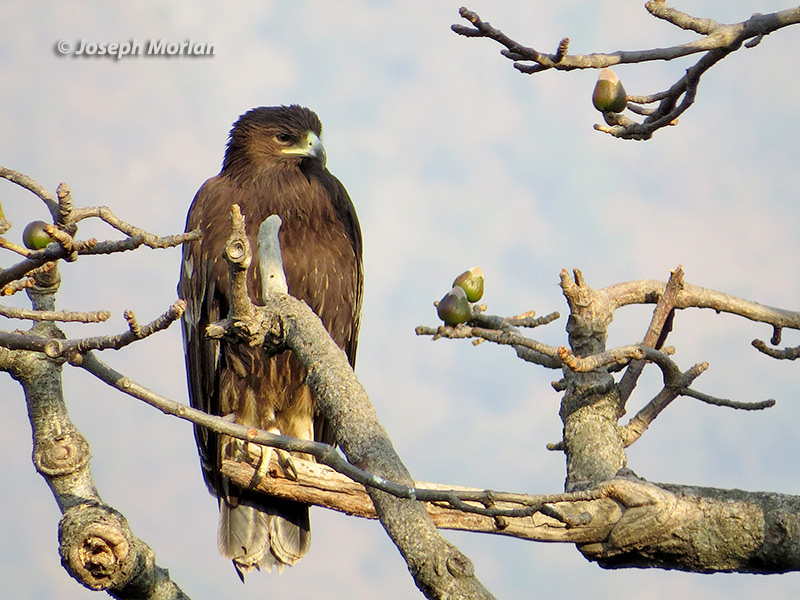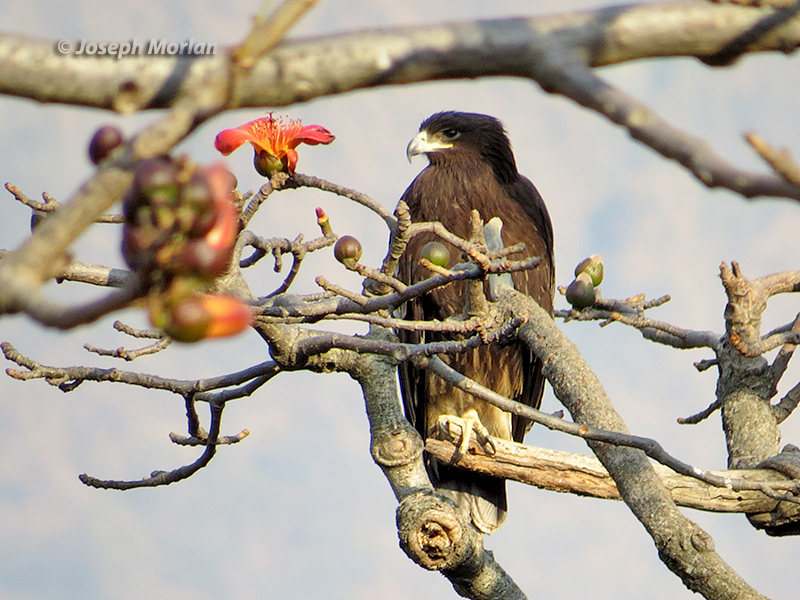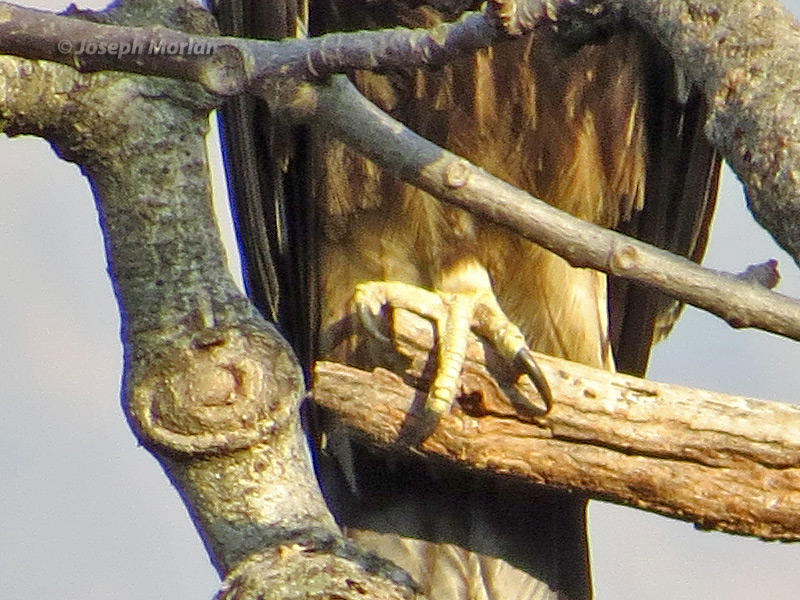


On our road trip down the mountain from Nainital to the train station, we stopped to admire this eagle perched in a flowering Red Cotton Tree (Bombax ceiba). The eagle's identification turned out to be a challenge. In the field we concluded it was a Steppe Eagle (Aquila nipalensis) which is a common winter visitor in this area. But after analyzing photos determined it was a Greater Spotted Eagle. The pale spots on the wing coverts, bushy nape feathers, round nostrils, gape reaching under eye only to middle, and whitish lower tarsal feathers all favor juvenile Greater Spotted Eagle.
We also considered the possibility of the similar Indian Spotted Eagle (C. hastata) which is not common in this area. Comparison with flower petals on the tree which are around 12 cm long suggests our bird is about 60-70 cm long which better fits Greater Spotted Eagle. Indian is smaller, usually less than 60 cm. Indian rarely has spotted wing-coverts, lacks the bushy nape and white lower tarsal feathers, and has relatively smaller feet. Greater Spotted Eagle is a long distance migrant visiting India in winter from breeding grounds in Russia. Canon PowerShot SX50 HS.
References:
Lontkowski, J. & Maciorowski, G. (2010) Identification of juvenile Greater Spotted Eagle, Lesser Spotted Eagle and hybrids. Dutch Birding 32(6):384-397.
Meyburg, B.U., Kirwan, G.M. & Garcia, E.F.J. (2016). Greater Spotted Eagle (Clanga clanga). In: del Hoyo, J., Elliott, A., Sargatal, J., Christie, D.A. & de Juana, E. (eds.). Handbook of the Birds of the World Alive. Lynx Edicions, Barcelona. (retrieved from http://www.hbw.com/node/53155 on 7 October 2016).
Rasmussen, P.C. & Anderton, J.C. (2012) Birds of South Asia. The Ripley Guide. Vols. 1 and 2. Second Edition. Smithsonian Institution. Michigan State University & Lynx Edicions, Washington. D.C., Michigan & Barcelona.